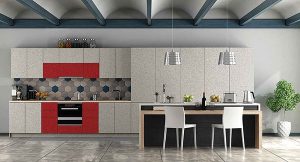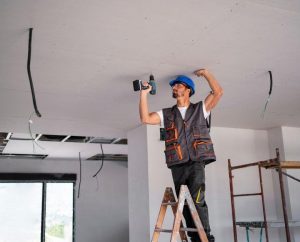Furniture Assembly Made Easy: Tips from the Pros

Buying and setting up furniture can be exciting and frustrating at the same time. Whether you’ve just moved into a new place or are giving your home a style refresh, assembling furniture can go quickly from a promising DIY task to a confusing puzzle.
However, there’s some good news. There are the right techniques, tools and some professional assistance available near you to make your furniture assembly easier. It doesn’t have to be overwhelming at all.
In this article, you will learn some essential tips shared by professionals to make your furniture assembly a convenient process.
How to Assemble Your Furniture Easily?
Here are some important tips from professionals to make your furniture assembly a convenient process:
Start With the Right Space and Tools:
Before you even proceed to open the box, you need to clear a wide and clean area where you will have the space to lay out all the parts. Carpeting is an ideal option for protecting finishes. However, if you’re working on hard flooring, you need to use a soft mat or blanket.
Professionals also recommend that you have a basic toolkit ready with you. While many furniture pieces come with a small allen wrench or screwdriver, you should have a quality screwdriver set, rubber mallet, cordless drill with torque control, and a set of pliers. This will quickly reduce your assembly time and effort.
You should also keep a utility knife with you. It is safer and faster for opening boxes and packaging than using the usual scissors or pulling tape by hand.
Read the Manual Thoroughly:
Now, this is the most essential aspect that you need to do. Not reading and understanding the manual thoroughly can be costly. It is often recommended by professionals to read the manual from start to finish before you start assembling the furniture.
Take note of any tools required, parts, list, and diagrams. Manufacturers often include helpful symbols that showcase important steps or common pitfalls. You need to understand these things beforehand to avoid mistakes later on.
You should highlight or mark confusing parts of the instructions. This will make the complicated parts easier for you while assembling a bookshelf or any other furniture.
Sort all Parts and Store Them:
Professional assemblers begin every job by sorting and counting all components. Lay out screws, bolts, pegs, and panels in a logical order on your workspace.
Some experts use muffin tins, ice cube trays, or even labelled cups to organize small parts. This simple method will help you prevent loss and keep track of everything.
If something is missing or damaged, avoid pushing it forward. Get in touch with the manufacturer or supplier immediately. Most companies are known to ship replacement parts free of cost, allowing you to continue your assembly project without compromising the structure and safety of the furniture.
Follow the Steps to the Point:
There is a reason why every step in the manual exists. Skipping ahead might look like a time-saver. However, it often results in extra time spent disassembling and correcting mistakes. This is the reason why you need to read all the steps thoroughly. Deviating from a single step can result in instability or misalignment.
You also need to be patient in this case. Completing each step thoroughly can help you get a better, more durable finished product.
Use Power Tools Thoughtfully:
Power tools can be both a blessing and a curse, depending on how you use them. They may speed up the assembly drastically. However, improper or unsupervised usage can strip screws, over-tighten bolts, or damage the wood.
That’s why you need to set your drill to a low-torque setting when driving screws into soft materials like particleboard. For final tightening, you need a hand tool, which will offer better control.
Pro Tip: Magnetic screw bits can help you prevent tiny screws from dropping into hard-to-reach corners, especially during vertical assembly stages.
Always Utilize Gravity:
This may sound a little funny. However, experienced assemblers often let gravity help them rather than fighting against it. For instance, you can assemble horizontal parts like shelves or panels flat on the ground before standing them upright.
Avoid balancing and aligning parts vertically, which will end up making them look awkward and unstable, especially when you haven’t sought any help.
While assembling larger furniture like wardrobes or cabinets, you need to secure the base first, then gradually build upwards. Such a bottom-up approach will ensure better stability and structural alignment.
Always Adapt the Teamwork Approach:
Some tasks often require extra sets of hands. Even professionals call in help for larger or more complex pieces. Having someone hold parts while you secure them can save time and prevent injury or misalignment.
For bulkier furniture, lifting and positioning are safer and easier when you do it with support from other people. If no one is available, you can consider using furniture sliders or wedges. These tools will help you maneuver pieces with a lower risk of strain or floor damage.
Double-Check for Level and Stability:
Once it gets assembled, you should give your furniture a quick inspection. Ensure all screws and bolts are tightened appropriately, and test the structure for wobbling or unevenness. Pros often carry a small level to verify the balance, especially for items like bookshelves, desks, or media units.
If a piece appears slightly off, check if it is standing on an uneven floor. Felt pads or adjustable feet can often solve these minor issues. By doing so, not only are you ensuring the stability of your furniture, but also extending its lifespan.
Furthermore, you need to secure tall furniture to a wall to avoid any tipover. Plus, don’t hesitate to approach professionals to ensure that your furniture is assembled in the most reliable manner.
To Summarize
Assembling furniture doesn’t have to be a stressful or overwhelming task. With the right tools, a careful approach, and a little patience, you can turn a box of pieces into furniture that you can use in your home. Furthermore, it is also about creating a space that feels functional, secure, and uniquely yours.



